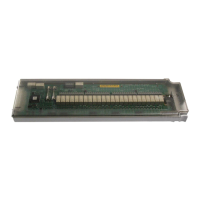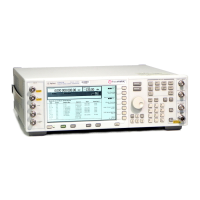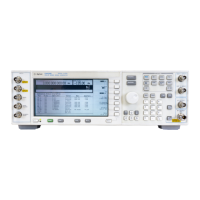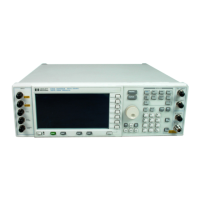104 Chapter 2
Programming Examples
LAN Programming Examples
import java.io.*;
import java.net.*;
class ScpiSockTest
{
public static void main(String[] args)
{
String instrumentName = "xxxxx"; // Put your hostname here
try
{
Socket t = new Socket(instrumentName,7777); // Connect to instrument
// Setup read/write mechanism
BufferedWriter out =
new BufferedWriter(
new OutputStreamWriter(t.getOutputStream()));
BufferedReader in =
new BufferedReader(
new InputStreamReader(t.getInputStream()));
System.out.println("Setting frequency to 1 GHz...");
out.write("freq 1GHz\n"); // Sets frequency
out.flush();
System.out.println("Waiting for source to settle...");
out.write("*opc?\n"); // Waits for completion
out.flush();
String opcResponse = in.readLine();
if (!opcResponse.equals("1"))
{
System.err.println("Invalid response to '*OPC?'!");
System.exit(1);
}
System.out.println("Retrieving instrument ID...");
out.write("*idn?\n"); // Querys the id string

